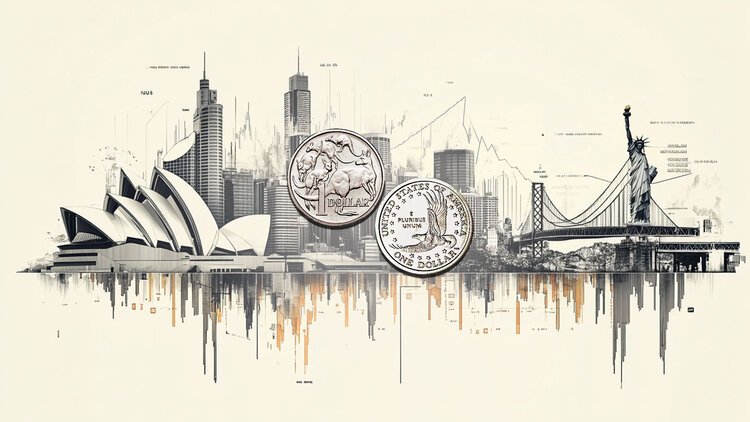The Pound Sterling (GBP) broke the previous consolidation against the US Dollar (USD) to the downside, as GBP/USD tested levels under 1.3300.
Pound Sterling tested bullish commitments
It was all about the USD comeback against its major currency rivals that led to the renewed downside in the GBP/USD pair.
The pair hit the lowest level in ten weeks at 1.3280, after having faced rejection once again at 1.3500 in the early part of the week.
The Greenback stood tall despite the extension of the US government shutdown and persistent bets for two Federal Reserve (Fed) interest rate cuts this year.
The main catalyst behind the USD strength was the sell-off in the Euro (EUR) and the Japanese Yen (JPY) in the face of political upheaval in France and Japan.
French Prime Minister (PM) Sébastien Lecornu resigned, less than a month into his tenure. The move comes just 26 days after he was appointed by President Emmanuel Macron, highlighting the continuing instability that has gripped French politics since last year’s inconclusive parliamentary elections.
Meanwhile, the JPY faced headwinds from “Sanae Takaichi won the Japanese ruling Liberal Democratic Party (LDP) leadership election over the last weekend, setting the country on course for more expansionary fiscal policy and complicating the task facing the Bank of Japan (BoJ),” per Reuters.
Furthermore, the Artificial Intelligence (AI) frenzy-driven record highs on US indices lifted the economic optimism, bolstering the USD’s upsurge.
GBP/USD also drew support from expectations of monetary policy divergence between the Fed and the Bank of England (BoE), as highlighted by a slew of central bank talks.
BoE policymaker Catherine Mann noted on Thursday, “the monetary policy must remain restrictive for longer to create an environment conducive to growth.”
Last week, BoE officials Dave Ramsden, Catherine Mann and Sarah Breeden warned about higher inflationary pressures, advocating the central bank’s prudence on further easing.
Week ahead: What to watch out for
Some delayed data publication from the US Department of Labor (DoL), Bureau of Labor Statistics (BLS) and the Census Bureau could be released in the upcoming week if the US government shutdown reopens even partially.
That said, it will be a quiet start to the week, with the US markets closed in observance of Columbus Day.
On Tuesday, the UK calendar will feature the employment data, which will be the only event of note that day.
The US Consumer Price Index (CPI) data for September is originally scheduled for release on Wednesday, but it remains to be seen if that happens due to the Senate deadlock.
However, there are reports that the US Bureau of Labor Statistics (BLS) has recalled a limited number of staff from furlough to complete the September inflation report. So, the data could be available before the Fed’s October 28-29 policy meeting.
Thursday will see the publication of the British monthly Gross Domestic Product (GDP) and Industrial Production data, followed by the tentative releases such as the weekly US Jobless Claims, Producer Price Index (PPI) and Retail Sales report.
On Friday, the September US labor market data, including the highly influential Nonfarm Payrolls (NFP), scheduled for October 3, could drop if the government funding is restored. Last week’s Jobless Claims will likely be released in that case.
Amid lingering uncertainty over the US economic situation, speeches from Fed policymakers, alongside any fresh geopolitical and trade updates will offer some directional impetus to GBP/USD traders.
GBP/USD: Technical outlook

GBP/USD sellers continued to the critical 50-day Simple Moving Average (SMA), now at 1.3474, initiating a fresh downtrend.
The 14-day Relative Strength Index (RSI) remains below the midline, suggesting that there is more room to the downside.
Adding credence to the bearish bias, the 21-day SMA closed beneath the 50-day SMA on Thursday, confirming a Bear Cross.
The initial support is seen around the 1.3250 region, below which a test of the August low of 1.3142 will be inevitable.
Ahead of that, the 200-day SMA at 1.3173 could offer some comfort to buyers.
On the flipside, GBP/USD must recapture the 1.3400 level on a sustained basis to challenge a powerful confluence zone between 1.3475 and 1.3500, where the 21-, 50- and 100-day SMAs hang around.
US Dollar FAQs
The US Dollar (USD) is the official currency of the United States of America, and the ‘de facto’ currency of a significant number of other countries where it is found in circulation alongside local notes. It is the most heavily traded currency in the world, accounting for over 88% of all global foreign exchange turnover, or an average of $6.6 trillion in transactions per day, according to data from 2022.
Following the second world war, the USD took over from the British Pound as the world’s reserve currency. For most of its history, the US Dollar was backed by Gold, until the Bretton Woods Agreement in 1971 when the Gold Standard went away.
The most important single factor impacting on the value of the US Dollar is monetary policy, which is shaped by the Federal Reserve (Fed). The Fed has two mandates: to achieve price stability (control inflation) and foster full employment. Its primary tool to achieve these two goals is by adjusting interest rates.
When prices are rising too quickly and inflation is above the Fed’s 2% target, the Fed will raise rates, which helps the USD value. When inflation falls below 2% or the Unemployment Rate is too high, the Fed may lower interest rates, which weighs on the Greenback.
In extreme situations, the Federal Reserve can also print more Dollars and enact quantitative easing (QE). QE is the process by which the Fed substantially increases the flow of credit in a stuck financial system.
It is a non-standard policy measure used when credit has dried up because banks will not lend to each other (out of the fear of counterparty default). It is a last resort when simply lowering interest rates is unlikely to achieve the necessary result. It was the Fed’s weapon of choice to combat the credit crunch that occurred during the Great Financial Crisis in 2008. It involves the Fed printing more Dollars and using them to buy US government bonds predominantly from financial institutions. QE usually leads to a weaker US Dollar.
Quantitative tightening (QT) is the reverse process whereby the Federal Reserve stops buying bonds from financial institutions and does not reinvest the principal from the bonds it holds maturing in new purchases. It is usually positive for the US Dollar.
If buyers find a strong foothold above that supply zone, the rising trendline support-turned-resistance at 1.3562 will come into play.
The next relevant topside hurdle is located in the 1.3600-1.3620 area. A firm break above the latter will expose the July 4 high of 1.3681.







